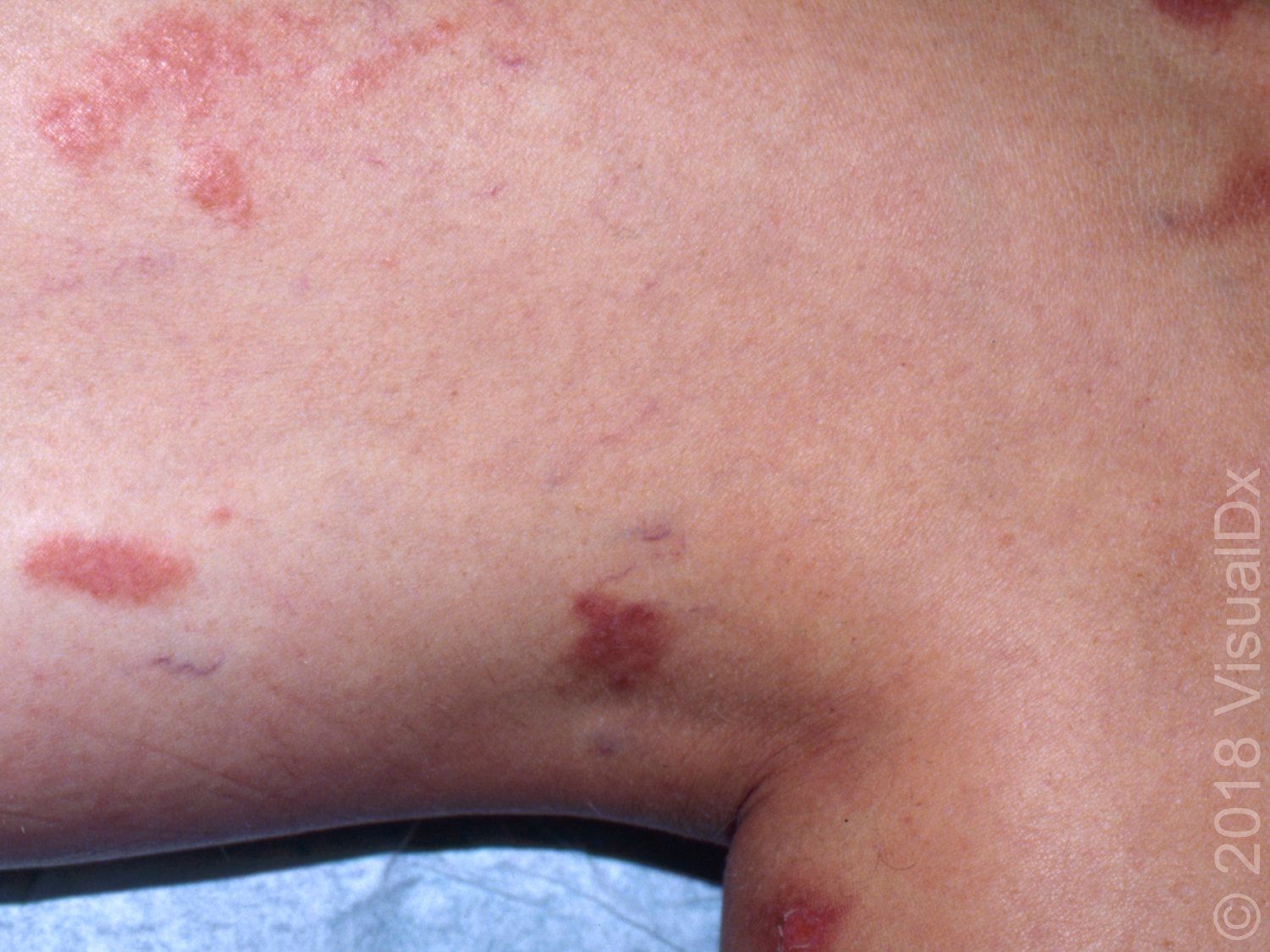- Case-Based Roundtable
- General Dermatology
- Eczema
- Chronic Hand Eczema
- Alopecia
- Aesthetics
- Vitiligo
- COVID-19
- Actinic Keratosis
- Precision Medicine and Biologics
- Rare Disease
- Wound Care
- Rosacea
- Psoriasis
- Psoriatic Arthritis
- Atopic Dermatitis
- Melasma
- NP and PA
- Skin Cancer
- Hidradenitis Suppurativa
- Drug Watch
- Pigmentary Disorders
- Acne
- Pediatric Dermatology
- Practice Management
- Prurigo Nodularis
- Buy-and-Bill
News
Article
Image IQ: Burning skin lesions after a walk
Author(s):
Multiple burning, painful skin lesions appear on the legs the morning after a walk in the woods. What’s your diagnosis?
Multiple burning, painful skin lesions appear on the legs the morning after a walk in the woods. What’s your diagnosis? (Photo courtesy of VisualDx 2018)

A 28-year-old woman visiting friends in Connecticut went to urgent care with multiple skin lesions on her legs appearing the morning after a walk in the woods. At first, her skin burned, then painful erythematous lesions appeared followed by vesicles. The patient said she was not in contact with poison ivy.
What’s your diagnosis?
A. Allergic contact dermatitis
B. Hogweed dermatitis
C. Stasis dermatitis
D. Erysipelas
Click on the next page for the answer.
The correct answer is B: Hogweed dermatitis
Giant hogweed (Heracleum mantegazzianum) is a plant that causes a phytophotodermatitis (a photosensitive dermal response) reaction. Exposure to the plant sap followed by sunlight causes a photosensitivity reaction. Hogweed is a tall plant with white flowers and a reddish-purple stem that grows predominantly on the East Coast and has now also spread to Pennsylvania, Michigan, Oregon, Washington, and Wisconsin. It grows in sunny, moist areas by the river or roadside, along tree lines, and is a popular addition to many gardens. Attracted by its large size and hollow stem, children may be inclined to use it as a play telescope or sword. A toxic psoralen, furocoumarin, present in the sap is highly lipid soluble and penetrates into the epidermis. High humidity aids absorption of psoralens. Absorption of ultraviolet A (UVA) by the psoralens leads to nucleic acid damage and formation of free radicals. Subsequent cell death leads to the quick formation of painful blisters. Contact of the sap with the eyes can cause temporary or even permanent blindness.
Preceding the skin lesions, the patient may experience a burning sensation of the skin. This is followed by erythema, edema, and vesicle formation within 24 hours of contact with the hogweed sap. If severe, in addition to the skin lesions, patients experience headaches and generalized fatigue. They may also complain of feeling hot.
Because phytophotodermatitis is a phototoxic reaction in which there is no immunological response, prior sensitization is not required. This type of photodermatitis is usually followed by hyperpigmentation.
Symptoms usually develop within 24-48 hours following contact with the sap and sunlight exposure.
Patients may continue to have symptoms such as pain, fatigue, and photosensitivity for up to a month after the initial plant contact.
Activities that predispose to sap exposure include gardening, hiking, bike riding, or when children use the large, hollow stem for play purposes. Pets, especially dogs, commonly acquire sap on their fur, which is subsequently transferred to the pet owner. Also, farmers and fieldworkers may inadvertently be exposed to the plant.
Of note, exposure to the plant sap of wild parsnip (Pastinaca sativa; "poison parsnip") can also cause severe phytophotodermatitis. It is frequently found in road ditches and fields, and exposure has occurred while hiking or biking along trails and gardening (pulling weeds). When in bloom it looks similar to Queen Anne's lace or dill plant and grows to around 4 feet tall. It is common throughout the United States.
ICD 10 Code: L24.7 – Irritant contact dermatitis due to plants, except food
For more information about this quiz â specifically, differential diagnoses and pitfalls, clinical tests, management pearls, therapy and a complete list of references â visit VisualDx online.






